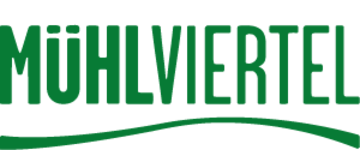Diakonissenhaus Bethanien
Gallneukirchen, Oberösterreich, Österreich
Hauptstraße 3
4210 Gallneukirchen
4210 Gallneukirchen

Deaconess House Bethanien - a place of social work then and now
This year, the former deaconess motherhouse Bethanien is the venue for the special state exhibition entitled "Help. Life Risks - Life Chances."
At the time, Haus Bethanien was not only regarded as a home and place of retreat for the deaconesses, who saw their mission as helping people in need, but also as a ladies' home, a refuge for refugees and the wounded, an emergency hospital during the Second World War, accommodation for guests, a small bookshop and a place of residence for students of the nurses' preparatory school and later also the training centre for curative education professions.
The building is now a listed building and, following structural refurbishment and adaptation, will once again be characterised by a mix of functions that represents social activity in the here and now: employment opportunities for people with disabilities in the arts and culture sector will find their place here, as will day care for people with dementia and assisted living flats for senior citizens. The new building also offers rooms for the neighbouring Ludwig Schwarz Schools, the Diakonie Academy, an archive and a small museum, as well as an event hall and prayer room.
Historical facts about the former Deaconess House Bethanien
Construction: built according to plans by Fabigan and Feichtinger on the cellars of the former Riener brewery, opened on 1 June 1909; the eastern half of the house was home to the deaconesses, the western half was a "ladies' home" (the income from this was part of the financing concept, generous donations were another important pillar of the financing)
Excerpt from the 1909 audit report: "It must be emphasised once again that such an institution, which meets all modern hygienic and sanitary requirements, must be warmly welcomed and will be an ornament to the Gallneukirchen market."
Details: very modern kitchen equipment for the early 20th century, dumbwaiter, in-house water supply with good spring water from wells via high reservoir in the attic to all floors; sewage disposal in cesspools...
Remodelling: Over the decades, various conversions and technical innovations, e.g. 1957/58 - terrace on the 2nd floor east is converted into a ballroom, 1965 - running water supply to all rooms (previously only bathrooms on the floors), 1974 - passenger lift, conversion of the attic into a new terrace with a terrace parlour as part of the roof renovation, 1977 - new windows made in the institute's joinery...
Home and retreat for the deaconesses: "By its very nature, the motherhouse is a place of gathering and education, of training and testing, of proving and sifting, of sending out and leading, of support and refuge, in short - a home for its sisters. The sisterhood is a community of faith, work and life," reads a text from the post-war years.
Work began with 2 deaconesses in 1877, at the beginning of the 20th century there were already around 90 sisters, around 1950 there were around 250. From the 1960s onwards, the number declined as there were no more new admissions despite intensive efforts.
Accommodation for guests at large events: Numerous events such as annual festivals, conferences, blessings of sisters and sisters' anniversaries, induction of rectors and superiors, etc. were organised.
Catering was provided by the in-house kitchen.
Reception of refugees and the wounded: both in the First and Second World Wars(for details, see article in DIAKONIE April 2014) - first large influx of refugees in September 1914 with around 200 orphans from Galicia! The 2nd floor was already made available for the wounded in August 1914!
Emergency hospital during the Second World War (part of the Deaconess Hospital Linz was evacuated to an improvised ward on the ground floor of Bethanien due to the bombing of Linz)
At the end of the war in 1945, large and small groups of refugees arrived in Gallneukirchen; at the time, a total of around 300 people were provisionally housed and cared for for months.
Accommodation for schoolgirls: During their training, the students of the nurses' preliminary school and later also of the school for curative education professions (now the school for social care professions) were able to live in rooms in the motherhouse at a favourable rate.
Kitchen : for many decades, the canteen kitchen in the basement provided large areas of the plant with all the meals of the day and was only closed down after the service centre was built.
Bookshop : between 1920 and 1975, the "Buchhandlung und Schriftenniederlage" was located in the gateway to the Deaconess House Bethanien, before a shop in the main street and later the current "Bücherinsel" in the Ludwig-Schwarz-Haus made expansion possible.
4210 Gallneukirchen
Phone +43 7235 632510
E-Mail office@diakoniewerk.at
Web www.diakoniewerk.at
http://www.diakoniewerk.at
on request
- Food and drink available
Service
- Guided tour
- All weather
Please get in touch for more information.
Ihre Anfrage
Do you have any questions? Do not hesitate to contact us!
Please fill in all fields marked *.
Propose changes
Please let us know how we can improve the quality of this property, or if there is any incorrect information on this page (e.g. opening hours, contact, etc.).
Please fill in all fields marked *.




